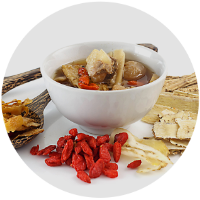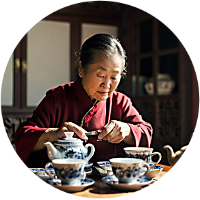A Culinary Journey Through China’s Regions
From River Deltas to Desert Plains
China’s vast geography and deep agricultural history have produced an astonishing variety of regional cuisines, each shaped by its climate, soil, water sources, and even philosophy. While rice dominates the southern regions and wheat in the north, the story of Chinese food is far more complex than this simple division.
In the fertile Yangtze River Delta, cities like Suzhou and Hangzhou are known for their delicate flavors and sweet, subtle sauces. The region’s mild climate supports the cultivation of freshwater fish, lotus roots, and glutinous rice. This is the birthplace of jiangnan cuisine, with dishes like West Lake vinegar fish and Dongpo pork. TCM recognizes the area’s cuisine as harmonizing and moistening—ideal for nourishing yin in the often humid south.
Head further west to Sichuan, and the culinary landscape explodes with bold flavors. The province is famed for its spicy, numbing dishes built on chili, garlic, and Sichuan peppercorns. The hot climate is often damp, and in TCM, pungent and warming ingredients like ginger and chili help dispel internal dampness. Popular crops include broad beans, red chilies, and rapeseed. Chengdu, the capital, is a UNESCO-recognized City of Gastronomy and a must-visit for hotpot lovers.
North China offers a sharp contrast. In places like Beijing and Shandong, where winters are long and dry, wheat is king. Here, you’ll find noodles, dumplings, steamed buns, and hearty braised dishes. Cabbage, leeks, and radishes store well in the cold, and fermentation plays a large role—pickled mustard greens and aged vinegar. These foods are warming and strengthening, useful for bolstering yang and protecting against cold invasions.
To the southeast, Fujian’s mountainous coast yields a cuisine with delicate broths and an emphasis on umami. Seafood, mushrooms, and bamboo shoots define the diet. Because of the region’s damp, subtropical climate, many dishes are light and easy to digest, aligning with TCM principles of supporting spleen function and avoiding food stagnation.
Guangdong (Cantonese) cuisine, found in Hong Kong and Guangzhou, is perhaps the most globally known. Its hallmark is freshness—stir-frying, steaming, and quick-cooking methods preserve the original flavor and color of ingredients. The region enjoys a long growing season, yielding bok choy, bitter melon, lychee, and more. In TCM, this cuisine is considered relatively balanced, offering cooling dishes like watercress soup or winter melon with barley to offset the region’s heat and humidity.
Even the high, arid plateau of Xinjiang has its own story. Influenced by Central Asia, the region grows wheat, grapes, and melons. Lamb and dairy products dominate, with cumin and other spices echoing the Silk Road heritage. Though distinct from Han Chinese food traditions, it adds to the rich mosaic of regional Chinese diets.
Each region, from the misty hills of Guizhou to the river plains of Hunan, tells a culinary story shaped by its environment and philosophy. For those practicing Chinese dietary therapy, understanding these regional roots helps guide choices that suit one’s constitution, climate, and season—not just taste buds.
Vocabulary Guide:
- Yin (阴): the cooling, moistening, and nourishing aspect in TCM.
- Yang (阳): the warming, activating, and protective aspect in TCM.
- Jiangnan (江南): literally “south of the Yangtze River,” referring to a cultural and culinary region known for its refined cuisine.
- Spleen function: in TCM, the spleen is central to digestion and nutrient absorption; weakened spleen function can lead to fatigue or dampness.







